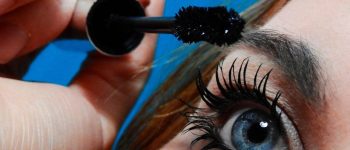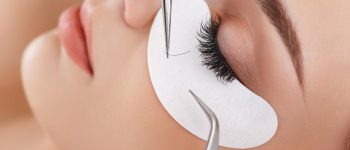Have you ever experienced the frustration of opening your precious eyelash glue only to find it dried up? It’s a common mishap that can happen to anyone. Eyelash adhesives are not cheap, and dried lash glues and clogged bottles can be a waste of your hard-earned money. But fear not! In this article, I will provide you with some valuable insights on how to prevent and tackle this problem.
Glue Bottle Cap! The Guardian of Success
The bottle cap is the unsung hero that protects your lash glue from drying out. It may seem like common sense, but many people overlook the importance of a properly closed cap. Modern glue bottles come with the nozzle attached as part of the bottle, which can lead to two problems.
Firstly, when you use the glue or shake the bottle with the cap on, a small amount of adhesive can collect on the inside of the cap. This adhesive quickly cures and builds up, preventing the cap from closing properly and allowing air to enter the bottle. The result? Dried glue. To avoid this, make sure to clean the bottle nozzle after every use. Turn the bottle upright, place a paper towel on the tip of the nozzle, and gently squeeze the bottle to remove any remaining glue. After burping the bottle, clean the outside and check the inside of the cap for any residue that can be removed with tweezers.
Secondly, shaking the glue with the cap on can also lead to residue buildup inside the cap. Instead, use the opening needle that came with the bottle or a bob pin to mix the glue. This ensures a clean cap and fresh glue for your next application. If you have a cracked or broken cap, unfortunately, there’s nothing you can do but discard the bottle.
Remember, a good lash artist relies on both expertise and quality lash glue to keep their clients happy. Don’t take any risks with your glue!
Wrong Environment
The environment in which you store your lash glue plays a crucial role in its longevity. Lash glue works best under specific temperature and humidity conditions. To prevent premature curing, store your glue at the recommended temperature and humidity levels. While it may be challenging to find the perfect balance for your specific area, there are steps you can take to minimize air contact with the adhesive.
Firstly, reduce the time your bottle remains open. Try to work quickly and efficiently during your lash application to minimize exposure to air. Additionally, storing your lash glue in a zip lock bag with a silica gel packet can help absorb moisture and prevent curing. Place the bag in a dry place at room temperature, avoiding the fridge as it is not a suitable environment for lash glue storage.
Lastly, consider using smaller bottle sizes. This tip is especially useful if you have a smaller client base. Using smaller quantities of glue ensures that you can finish the bottle before it dries up. Remember to check the manufacturing date of the glue and opt for the freshest option available.
Expired Glue
Like any other mixture, lash glue has an expiry date. As lash glue reacts with moisture, it can go bad over time. It is generally recommended to use lash glue within the first two months of manufacturing for optimal results. However, please refer to the instructions on your specific glue label for detailed information on its shelf life. Different types of glues may have different shelf lives, with clear or hypo-allergenic glues often having shorter durations.
Expired lash glue should be avoided at all costs. Even if it appears to be in liquid form after its expiry date, the adhesive properties of acrylate-based glues diminish over time. The glue can become stringy or clumpy, indicating that it is no longer effective. To ensure the best results and retain your reputation as a lash artist, it’s crucial to stay vigilant and use fresh lash glue.
Maintaining the quality of your lash glue is a vital aspect of your business. By following these tips and understanding the nature of lash adhesives, you can save yourself from the frustration of dried-up glue and provide your clients with the exceptional service they deserve.
To stay updated with more articles on lash and eyebrow care tips, make sure to subscribe below. And remember, for all your eyelash and eyebrow needs, visit Ekilove.




